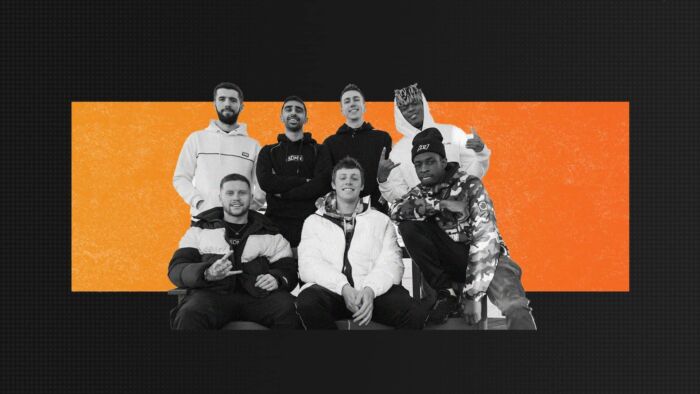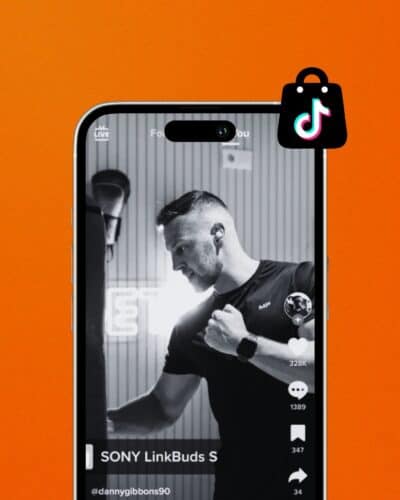Subscription platforms like Patreon have ushered in a new dawn of financial sustenance amongst online creators and influencers. But how did we get here? What were the defining moments in which creator subscription services blossomed from a one-time donation to an olive branch of payment systems that test the structural integrity of online income models that creators once solely depended on… we’re looking at you, YouTube.
The YouTube Adpocalypse

The term ‘Adpocalypse’ is a phrase coined by YouTube creators to refer to the end of times, which for a YouTuber is when the ill-starred yellow dollar sign attaches itself to a creator’s video. This yellow toned icon represents demonetisation or the process whereby independent content creators are denied paid ad rolls throughout their video, thus denying them revenue and reducing their income from the video-hosting platform.
Revenue from ads is one of the main sources of income for creators on YouTube and has played an integral role in the progression of both creators and wider platform growth. The video-hosting platform acts as the middleman; with creators receiving payment to place advertisements across their content.
However, monetisation is not a one-way ticket to financial nirvana. Content creators have to be a part of YouTube’s Partner Program while adhering to the community guidelines and advertiser policies therein. The first sign of catastrophic change on the platform came in 2016 when YouTuber PewDiePie found himself in controversy number one, kicking off the first Adpocalypse with some less than wise anti-semetic comments, prompting the Wall Street Journal to launch their defamatory attack on the Swedish creator. This, along with a discovery that YouTube was running ads over videos from terrorist organizations and other extremist groups, caused YouTube to implement policies that gave advertisers more control over the placement of their ads. What followed was a huge dip in creator revenues, as YouTube became hypersensitive to the content eligible for monetisation.
The Rise of Subscription Platforms
During the Adpocalypse, creators became aware of how reliant they were on YouTube, AdSense, and support from advertisers. As demonetisation plagued the platform and creators worldwide, there was a solution to this barren wasteland preparing to alter the fabrics of the online creator sphere.

Enter Patreon, a crowdfunding platform that allows fans or patrons to pay and support artists for their work. The platform provided a solution for creators of videos, webcomics, music, podcasts and many more formats to earn extra income for their work.
Patreon’s goal is to fund the purpose of online creators and create a sustainable platform for influencers to reap deserved rewards for the work that they produce.
“We want to fund the creative class.” Patreon’s CEO and co-founder, Jack Conte told the verge in 2017.
“Ten years from now, we want kids growing up and graduating college and high school to know that being a professional creator is possible.”
During YouTube’s adpocalypse, many creators saw the value in setting up their own Patreon channels in search of a more consistent and reliable revenue stream.
The platform allows creators to set up monthly, subscription-style payment tiers, with different pledges for different levels of content or for various perks. For example, a patron could pay a monthly subscription fee of five dollars and receive exclusive early access to a creator’s content.
In the years following the plummet of creator revenues on YouTube, subscription service platforms like Patreon have helped online creators generate a more consistent funding system through supporter-led pledges.
Creator Subscription Services Today
So, where exactly do subscription platforms reside in the current day? For many, the fallout on YouTube and the rise of Patreon has brought to life a network of subscription-based platforms that have allowed creators to earn a more reliable living.
In today’s market, creators can pretty much pick and choose the platform in which they want to set up shop, with some dependency on the type of niche creators represent, we shouldn’t expect to see a gaming streamer surpassing the top earners on OnlyFans.
This brings us onto the next heavyweight in the division.
OnlyFans
Launched in 2016, OnlyFans is a subscription-based platform where users can sell and/or purchase original content. Sounds quite plain on the surface right?
A few years into its life, OnlyFans became synonymous with NSFW or adult content. It became a platform for adult performers, models, and pretty much anyone who wanted to share a photo of them in their birthday suit with anyone who was willing to purchase – which turned out to be quite a lot.
Prior to a statement from the company’s CEO, Tim Stokeley, the systematic upload and purchase of content on the platform seemed untouchable, as the years turned over we heard success story after success story about how the income from OnlyFans subscriptions had changed people’s lives.
In August of 2021, OnlyFans announced that it would be banning sexually explicit and adult content on the platform then quickly overturned the decision – following outrage from the platform’s community who now relied on the platform for their main souce of revenue!
Nebula
Aside from being an enormous cloud of dust and gas that stretches hundreds of light years across space, Nebula also is the name of a new subscription-based platform for creators.
The video streaming platform was designed with the intention to help YouTube creators become independent earners away from YouTube’s algorithms.
Nebula’s services are available to users for five dollars each month or $50 for a year’s subscription. The platform promises users a hassle free experience, with no ads rolls, downloadable content, and all the exclusive content you could ever dream of.
While the premise of Nebula’s rise seems prominent enough to topple the colossus that is YouTube, the platform has found success in standing in its shadow, acting as a prerequisite for YouTube content in that creators can test-drive new content before uploading it to their established YouTube channels.
Buy Me a Coffee
Buy Me a Coffee is a crowdfunding company based out of San Francisco that enables creators to collect donations from their supporters.
Creators have the option to receive one-time donations or recurring pledges from supporters, and even a digital shop.
Currency on the platform is defined by ‘Coffees’. Each creator can determine how much one coffee is worth, which allows visitors to choose how many coffees they wish to donate.
Buy Me a Coffee has been closely compared to Patreon in the years since its establishment, although the two platforms do share some differences.
Firstly, Buy Me a Coffee offers a unique digital store experience for creators and users to sell and purchase products.
Creators on Patreon must actively work on a project in order to start a pledge page, whereas Buy Me a Coffee allows users to set up without restrictions.
Patreon also falls behind its competitor in that there are no customisable widgets to add to external websites or discount codes for things like memberships and donations.
Creator-led platforms: Side+

Side+ was launched earlier this year by one of the UK’s largest creator circle’s, the Sidemen. The launch of their platform was yet again sparked by another of YouTube’s creator strikes.
KSI, a prominent member of the Sidemen group, found that there was some frequency in demonetised videos on his second channel. This was the result of content found in some of his older videos, which likely had the rest of the group fearing that they’d meet the same fate, and so Side+ was born.
This platform is the next step for creators, well, ones that have a large enough audience to accommodate an income through their fans. But in a general sense, this allows creators to take the reins on the revenue they receive without any sign up fees, percentage cuts or worries that the service could collapse.
No, instead this creates an assurity amongst online creators, which is something that has been void from the careers of YouTubers probably since their very first upload.
There is no doubt that larger creators will follow in the footsteps of the Sidemen in years to come and in addition, it seems the creator subscription model is very much here to stay.





